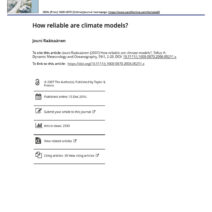Throughout the annals of human existence, coastlines have served as both cradle and canvas, where land and sea waltz with rhythmic elegance. However, in an era of unprecedented climatic upheaval, these shores—once steadfast and enduring—are succumbing to the relentless march of global warming. The intricate interplay of temperature rises, melting ice caps, and fluctuating sea levels composes a harsh sonnet that rewrites the poetry of our coastlines.
The phenomenon of coastal erosion, likened to nature’s cruel sculptor, meticulously chisels away at the land’s edge, reshaping the very essence of biodiversity and human habitat. Waves, once gentle caresses of the ocean, have transformed into aggressive harbingers of change, gnawing at the shore’s foundation. As sea levels rise, the volume of water exacerbates this erosion. It becomes a theater of disaster—a poignant reminder that the Earth’s delicate balance is in flux.
One of the primary architects of this coastal calamity is the increase in atmospheric temperatures induced by greenhouse gas emissions. A higher carbon footprint not only contributes to global warming but intensifies the process of glacial melting, particularly in polar regions. The Greenland and Antarctic ice sheets, once majestic fortresses of ice, are disintegrating at alarming rates. Scientific data reveals that these colossal structures hold enough water to elevate sea levels by several meters, a threat that looms ominously over coastal settlements and marine ecosystems alike.
As we gaze toward the horizon, we must confront a disconcerting reality: many iconic coastlines, such as the Florida Keys, California’s Pacific coast, and the beaches of New Jersey, face a future characterized by increased flooding and habitat loss. The craftsmanship of nature is being dismantled brick by brick—creeks and rivers that once emptied into the sea are now merging with saltwater, creating estuarine environments that defy historic boundaries. This phenomenon cannot merely be cataloged under natural variability; it is the unequivocal hand of anthropogenic climate change at work.
Furthermore, the repercussions of coastal erosion extend far beyond the physicality of land. They unearth a labyrinth of socio-economic challenges that require urgent attention. Coastal communities that rely on tourism, fishing, and agriculture face existential threats. The hospitality industry, tied intricately to pristine beaches and vibrant marine life, is grappling with the dissonance of disappearing landscapes. The decline in fish populations, driven by altered habitats due to rising temperatures, poses additional concerns for local economies dependent on sustainable fishing practices.
Yet, amidst this chaos, there lies an opportunity for reinvention. Coastal resilience strategies are being born from necessity, blending science and community action. Coastal restoration projects, like the creation of artificial reefs and the restoration of mangroves, are aimed at nurturing ecosystems while simultaneously reinvigorating local economies. The resilience of these natural barriers not only defends shorelines but also offers sanctuaries for myriad species. This multifaceted approach utilizes the age-old wisdom of nature, harmonizing human development with environmental sanctity.
Education and advocacy also play pivotal roles in cultivating a collective consciousness around the preservation of our coastlines. By illuminating the intricate connections we share with the marine environment, we can foster a grassroots movement for change. Environmental stewardship programs inspire individuals to participate in beach clean-ups, coral gardening, and monitoring coastal wildlife populations. When communities unite, they become the vanguard voices demanding sustainable policies from local governments and implementing eco-conscious practices in daily life.
Moreover, innovative technologies emerge as beacons of hope in combatting the adverse effects of climate change on coastal landscapes. Geographic Information Systems (GIS) enable scientists to predict erosion rates, providing valuable insights for urban planning and infrastructure development. Similarly, advances in marine engineering introduce techniques for constructing seawalls that adapt to shifting sea levels and intensifying storm surges. These solutions, grounded in scientific research and technological prowess, exemplify humanity’s commitment to safeguarding our coasts.
Perhaps the most profound metaphors lie not in nature itself but in our understanding of interconnectedness. Just as the tides ebb and flow, we are reminded that humans are not separate from the ecosystems we inhabit; we are an integral thread in the larger tapestry of existence. As we witness the erosion of our beloved shores, it becomes essential to reexamine our relationship with the planet. Each action, measured in tons of carbon emissions or ripples of plastic pollution, sends forth waves of impact that can either erode or enrich the environment.
In closing, the metamorphosis of our coastlines driven by global warming serves as a clarion call to embrace stewardship. The narrative of the ocean and the land is not merely a story of loss but of resilience and opportunity. By acknowledging the challenges and leveraging our collective creativity and innovation, we can craft a new chapter in which humanity and nature coexist harmoniously. With every investment made in sustainable practices, every piece of litter picked up from the shore, we contribute to an enduring legacy—a testament that we will not allow our coasts to crumble into oblivion. Instead, we will nurture them, for they are more than mere land; they are the essence of life, community, and resilience against the tides of change.






